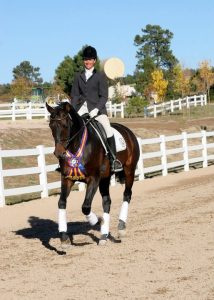 Editor’s Note: Best Horse Practices Summit presenter Katrin Silva grew up riding dressage in Germany before moving to the United States at age 19 to learn to ride Western. She’s been riding both disciplines for the last 20 years and is a regular guest columnist for Cayuse Communications. The author of Dressage for All of Us: How to Help Any Horse Become a Happier, More Responsive Riding Partner lives in New Mexico where she works with dressage and Western clients. Visit her blog here.
Editor’s Note: Best Horse Practices Summit presenter Katrin Silva grew up riding dressage in Germany before moving to the United States at age 19 to learn to ride Western. She’s been riding both disciplines for the last 20 years and is a regular guest columnist for Cayuse Communications. The author of Dressage for All of Us: How to Help Any Horse Become a Happier, More Responsive Riding Partner lives in New Mexico where she works with dressage and Western clients. Visit her blog here.
In this essay, Katrin considers horse shows and compares them to another of her passions and expertises, ultrarunning.
Listen to Episode 30 of our podcast, to hear more about the pros and cons of horse competitions with Katrin, Amy Skinner, and Jec Ballou.
Katrin writes:
Ten years ago, I had lost my way in the horse world. I was entering my forties. I was tired of horse shows. I was tired of working 60-plus hour weeks. I was tired of being judged. I was tired of competitive dressage. I was tired of feeling anxious and unworthy. I thought it was impossible to keep training horses without compromising my core values. I did what I thought I needed to do: I quit.
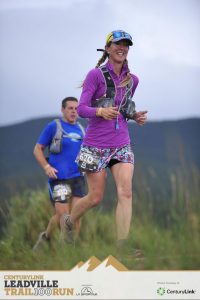 When I stopped training horses, I started running ultramarathon races, i.e. distances longer than 26.2 miles. I didn’t know it at the time, but running helped me find my way back to training horses, and to showing horses – with a clearer sense of why I still want to do it, and how.
When I stopped training horses, I started running ultramarathon races, i.e. distances longer than 26.2 miles. I didn’t know it at the time, but running helped me find my way back to training horses, and to showing horses – with a clearer sense of why I still want to do it, and how.
The culture of trail running has become my model for the kind of equestrian culture my students and I can thrive in. I feel grateful to many trail running friends and mentors for teaching me, and for changing my outlook on life. Out of all of these amazing people I met along the way, I feel most grateful to Matt Gunn.
In 2014, while hiking up a mountain at the Chimera 100, I met a shaggy, soft-spoken guy with a disarming smile. For several hours, moving toward the finish line during a cold, dark night, we talked – one of those trail conversations that turn strangers into friends. He casually asked me to become an ambassador for a series of trail races he was organizing. I agreed.
For the next few years, I ran Matt’s races, blogged about them, volunteered for them. I got to spend a night helping runners at an aid station in Monument Valley. I got to watch the sun set, and rise again, over Bryce Canyon’s pink cliffs. I owe Matt for a long list of life-changing moments. But more than anything, I owe him for teaching me about what trail races can be: much more than a contest, much more than trying to beat the other runners. Matt’s events were transformative experiences for everyone who participated.
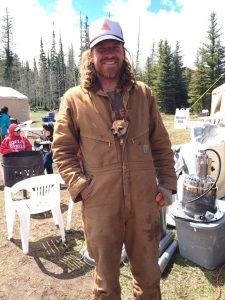
Matt Gunn
Here are the lasting lessons he taught me:
1. Ultras are about community, about connecting with others. You can feel a sense of “Wow! We are so lucky we get to do this, together!” at every race. I have shared countless miles and deep conversations out on the trails, many of which have blossomed into life-long friendships.
2. Ultras are celebrations – of spending time immersed in mind-blowing scenery, of hard-earned finishes, of obstacles overcome, of stories told, of human bodies performing like they’re superhuman for a day. At every race, no matter how or whether I finish, I feel the awe and wonder of being out there, in beautiful places, experiencing something unique I’ll remember forever, even when my quads hurt.
3. Ultras are about being there for each other. When you see another runner sitting on a rock somewhere, you stop. You ask if everything is ok. You do what you can to make things ok. You don’t think about the time you lose by doing this. The clock keeps ticking, but helping someone is always more important than your finishing time. So is thanking the aid station volunteers and picking up trash along the trail.
4. Ultras honor the last-place finisher as much as, or more than, the winner. I remember how astonished I was during my first 50-mile race on an out-and back course, when the front runner blazing by me took a moment to look up and tell me “Great job!” like he meant it. There’s an implicit understanding that everyone out on the course is giving it his or her best, whatever that may be today.
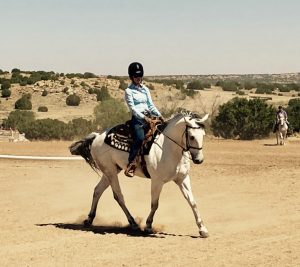 Simple stuff, really – but as easy to forget as it is important.
Simple stuff, really – but as easy to forget as it is important.
Matt left this world last October, way too young, way too soon. I wish he had stuck around for longer. I can’t ask him anymore, but, now that I’m training horses again, I often imagine what he would do at a dressage show.
I know that, first thing, he’d replace the porta-potties with eco-commodes, complete with instructions taped to the door, reading: “cover thy turd with sawdust.“ I know, that, after the day’s classes are over and the horses fed, he’d get all riders to hang out in camp chairs scattered around fires lit in trash barrels, eating wood-oven pizza, and sharing stories about their horses.
I know he’d somehow get the Grand Prix rider to tell the newbie amateur on her anxious off-the-track thoroughbred “Great job!” like she meant it. I know he’d somehow convince all competitors to look out for each other: to read tests, to hold horses, to offer encouraging words, a shoulder to cry on if necessary.
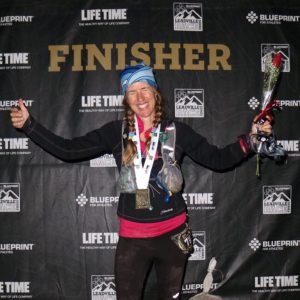 I know the scores would, somehow, matter less. I know no one would make catty comments about other exhibitors, or about their boots, or their hair, or the cleanliness of their tack. I know I could walk up to another rider and tell her “Wow! Isn’t it great that we get to ride here today, that we get to enjoy our beautiful horses?” and no one would find this weird. Horse shows would become a place to connect with friends, to appreciate our horses and our evolving, ever-improving relationship with them.
I know the scores would, somehow, matter less. I know no one would make catty comments about other exhibitors, or about their boots, or their hair, or the cleanliness of their tack. I know I could walk up to another rider and tell her “Wow! Isn’t it great that we get to ride here today, that we get to enjoy our beautiful horses?” and no one would find this weird. Horse shows would become a place to connect with friends, to appreciate our horses and our evolving, ever-improving relationship with them.
Why can’t horse shows be more like ultras?
Maybe they can. Maybe it’s time to make it happen. I know Matt would approve.
Beautiful put!!!
Thank you, Lynn!
Wow what a great article!! I can feel your words, the comradery around them. Matt must have been a gem ; )
Thank you, Jenny. Matt was a great guy. I miss him, but he lives on in everyone he influenced.